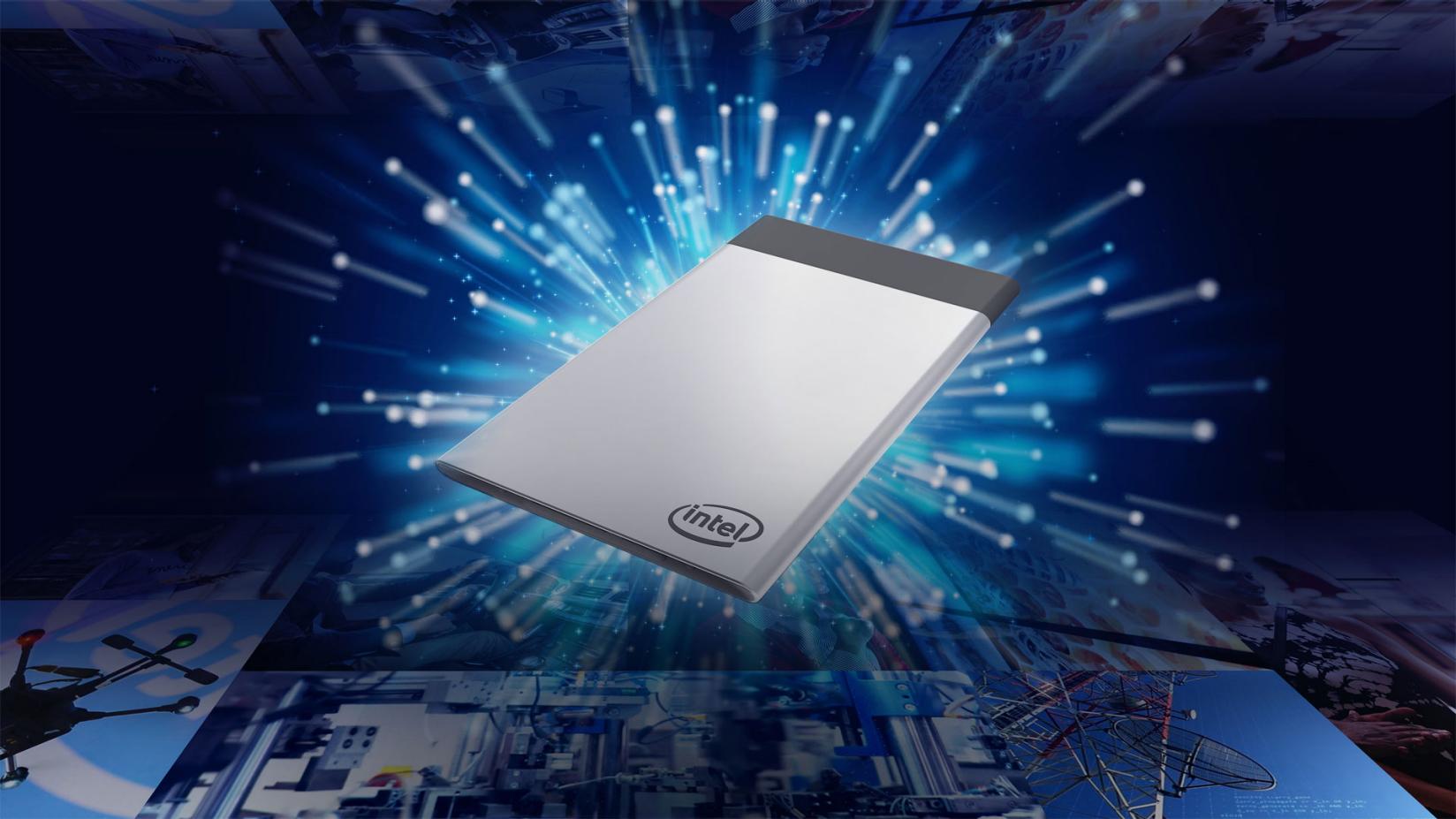Intel introduced a credit card-sized computer

Intel has been producing miniature PCs for quite some time, which, at the same time, have almost all the capabilities of "adult" desktops. This time, Intel introduced something different from all other devices of this type. This is one of the smallest full-fledged computers, called Compute Card . The name is not accidental, the fact is that the size of the PC is 95.5x55x5 mm. That is, this computer can be simply put in a pocket and easily transported to any place.
The Intel Compute Card package houses the seventh generation Intel Kaby Lake processor, RAM, regular memory plus wireless modules. The system is very small in size, so that it will not be possible to connect peripherals to one of the usual types of wired connection. But the idea of the developers is different - in their opinion, the Compute Card should be placed in a special slot of a larger device, just as it is done with smart cards.
And by the way, this system is not designed to work as a desktop. Rather, it is focused on working with all-in-one systems, robots, drones, smart TVs and other devices. Actually, Compute Card, rather, a kind of expansion module. According to the developers, it can be used to increase the performance and capabilities of ordinary computers. Of course, this is only possible if such systems are equipped with an appropriate slot where the Compute Card can be placed. In order to update the configuration of your desktop computer, you can not go to the store for individual items, but simply buy the Compute Card module and insert it into the slot - this upgrade can be considered complete.
')
Unfortunately, there is no detailed information about the characteristics of the Compute Card. But Intel promises high performance of such systems. The developers claim that in such a system can be placed as entry-level chips, such as Atom processors, and high-performance top Core i5 and Core i7, usually placed in the top laptops and a number of desktop computers.
To connect the Compute Card with other systems, an expansion slot of the “USB-C plus” type is used. This connector provides direct access to USB and PCIe buses, as well as HDMI and DisplayPort outputs. The company has been considering its new miniature computers as an alternative to the Compute Stick, which has been in use for quite a while. In 2018, as far as can be judged, Intel will stop developing these systems.
Intel is not too frank about the software support of its new hardware platform. According to the developers, Compute Card is compatible with Windows and Linux, as well as with other operating systems. But as for updates for software modules compatible with Compute Card devices, it is not completely clear who will be responsible for the release of updates and whether the users themselves can do something about this.
Intel will not provide additional information on features, pricing and other details regarding the Compute Card until this June. And miniature PCs themselves will be available in the “middle of 2017”. Compute Card partners claim Dell, HP, Lenovo, and Sharp as hardware developers. And Seneca Data, InFocus, DTx, TabletKiosk, and Pasuntech will deal with the commercial side.
In the meantime, the company is preparing to release new items, you can continue to work with the Intel Compute Stick. Fortunately, this year they received Intel Core and Realsense cameras. True, the last module was shown only on the prototype of the device - here the camera was placed on the side, being surrounded by several microphones at once. At the same time, the RealSense function works quite well: Windows Hello works, gestures are recognized, there is everything that is needed. In addition, the Intel Compute Stick is a standalone, “ready-to-use” system. They can connect the display, keyboard, mouse and all that is needed.

The first version of this microcomputer was released in 2015. That model was equipped with a quad-core Intel Atom Z3735F (Bay Trail) processor, 2 GB of RAM, 32 GB of internal storage, Wi-Fi 802.11n, Windows 8.1. A more advanced second version appeared last year, and she got all the best. Namely, Windows 10 Home, two USB connectors, a more efficient Atom x5-Z8300 processor (Cherry Trail) and 802.11ac support (2x2 antenna instead of a single one). One of the USB connectors works according to the USB 3.0 standard.
Shortly after the release of the second model of a miniature PC from Intel, they began to release their own versions of the sticks and other companies. For example, Lenovo has released the Lenovo Ideacentre Stick 300. Inside - everything you need to work. This is a 64-bit quad-core Bay Trail with 2 MB cache in the second level, 2 GB DDR3L, built-in storage - 32 GB eMMC, made by Kingston, video subsystem - Intel HD Graphics, WiFi module - Realtek RTL8723BS, which supports 802.11 b / g / n, as well as Bluetooth 4.0.
Stickers can be used to work with information stands, together with TV, at exhibitions, to work with them as “moving PCs”. In addition, sticks can be used for medical tasks, video surveillance, etc.

Compute Card's use is somewhat more specific. But we must think that Intel just introduced a “computer - card”. After the expansion slots for this computer are released, it will be possible to work with it practically everywhere. Probably, you can imagine the same monitor with a slot for a Compute Card, inserting into which this system, we get a full-fledged productive PC. But these are only guesses - so far it remains only to wait for additional information from Intel.
Source: https://habr.com/ru/post/373037/
All Articles